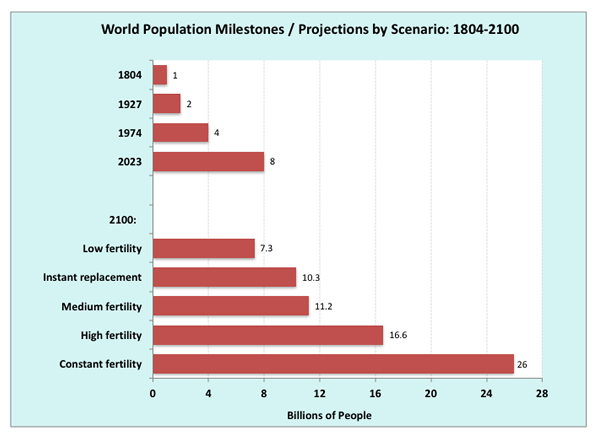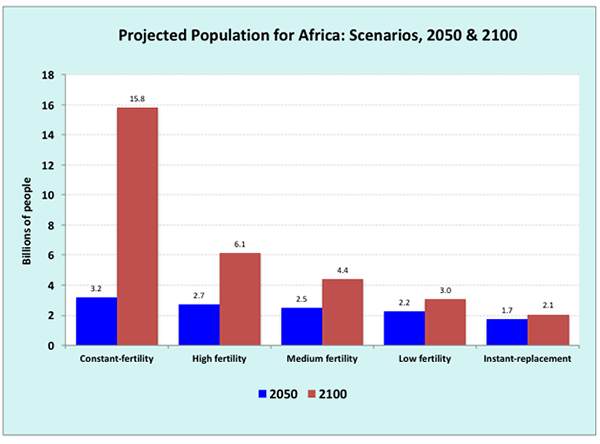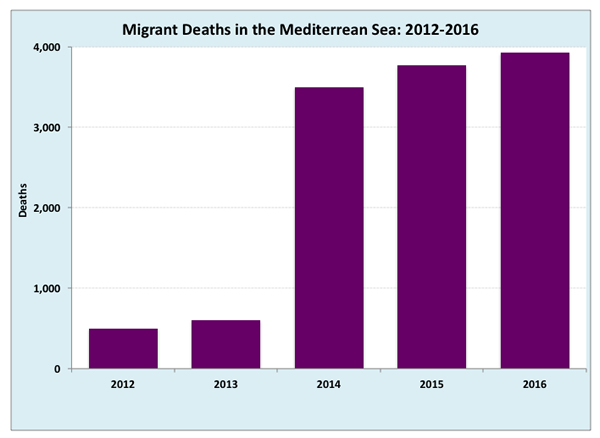Africa’s Population Growth Could Undermine Sustainability Goals – Analysis
Africa, by far the world’s most rapidly growing region, must aim for population stabilization to ensure peace.
By Joseph Chamie*
World population, now 7.4 billion, is at a record high and will reach the 8 billion milestone before 2025. Managing this increase should not be ignored, postponed or relegated to laissez-faire or invisible-hand policies.
The paramount issue of the 21st century is the stabilization of world population. World population growth depends largely on the future course of fertility or childbearing, especially in Africa, by far the most rapidly growing region. Policymakers must aim for population stabilization. To do otherwise jeopardizes efforts to achieve universally adopted sustainable development goals, including ending poverty, protecting the planet and ensuring that all people enjoy peace and prosperity.
After centuries of innumerable births and deaths, world population reached its first billion milestone at the start of the 19th century in 1804. During the 20th century, world population doubled to 2 billion in 1927 and doubled again to 4 billion in 1974. Current projections forecast that the next doubling of world population will likely occur in seven years.
Could world population again double to 16 billion during the 21st century? While a cataclysmic event like the Black Death or an asteroid could strike the planet and decimate humanity, most scientists view such events as highly unlikely.
Five projection scenarios point to continued demographic growth for the world and Africa over the next several decades.

Constant fertility: Although considered improbable, an instructive population projection assumes that current fertility rates of countries remain unchanged or constant throughout the 21st century. Under such a hypothetical scenario, world population increases rapidly, doubling to 16 billion by the year 2077 and reaching 26 billion at the close of the century. Nearly 80 percent of that projected demographic growth is in Africa – the continent’s population increasing to 3.2 billion by 2050 and nearly 16 billion by 2100. In striking contrast, Europe’s population with its below-replacement fertility rates decreases 25 percent by the century’s end.
Instant-replacement fertility: Another improbable but instructive projection assumes the fertility rates of all countries move instantly to the replacement level of about 2 births per woman. In this instant-replacement fertility scenario, world population continues to grow, stabilizing at around 10 billion by the century’s end. Again, due to its young age structure, Africa’s population increases by about 70 percent over this period, from 1.2 billion to 2.1 billion.
Medium fertility: Perhaps the most widely cited and utilized population projection is the United Nations medium variant. It assumes that global fertility declines gradually from its present average of 2.5 births per woman and converges for most countries around the replacement level of 2 births per woman by the end of the 21st century. In such a scenario world population reaches 11.2 billion by 2100. Again, Africa accounts for more than 80 percent of world’s future growth, its population doubling to 2.5 billion in 2050 and nearly quadrupling to 4.4 billion by the century’s close.

Low fertility: Under the UN low-variant projection, average world fertility declines gradually to a level of 1.5 births per woman by century’s end. In such a scenario, world population initially increases to a high of 8.7 billion in 2050 and plummets to 7.3 billion by 2100. Even in this scenario, however, Africa’s population continues to grow, adding a billion more people by 2050 and nearly a second billion more during the second half of this century.
High fertility: Average world fertility in the high-variant scenario increases after a decade to nearly 3 births per woman and gradually declines to 2.5 births per woman by century’s close. With fertility rates well above replacement, world population grows rapidly, reaching the global population-doubling milestone of 16 billion in 2096. Even more rapidly, Africa’s population doubles to 2.5 billion by 2050 and quintuples to 6.1 billion by century’s close.
The world’s fastest growing populations are now in Africa. More than a dozen countries have rates of increase in excess of 3 percent, including Niger at 4 percent; Gambia, 3.4 percent; and Uganda, 3.3 percent. If current growth rates continue, the populations of 15 African countries would more than triple by midcentury.
The rapid demographic growth of African countries not only undermines their development efforts, but also threatens political stability and basic survival of their populations. As many as two dozen countries struggle with food crises across sub-Saharan Africa – twice as many as in 1990. Sub-Sahara Africa has the highest prevalence of undernourishment in the world.
Unemployment and underemployment, especially among the youth, constitute another major challenge facing African countries. Poor job quality with low and highly volatile earnings is common among sub-Saharan Africa countries. Even those with higher education levels encounter obstacles in securing suitable employment.

The number of young Africans aged 15 to 24 years is expected to nearly double by 2050, to 452 million. During the same time period, in contrast, the number of European youth is expected to decrease by 12 percent. If only a few percent of young Africans are attracted to European labor demands, the resulting unauthorized and risky migratory outflows would be many times greater than recent numbers. During the first 10 months of 2016, about 330,000 migrants and refugees entered Europe by sea – and more than 3,800 died attempting to cross the Mediterranean, a steady increase over the past five years.
Africa is the remaining continent passing through the demographic transition from high to low death and birth rates. While mortality levels are still comparatively high by developed country standards, rates have declined significantly in many African countries. In contrast, however, fertility levels remain high, with 20 countries having rates in excess of five children per woman, including Niger, 7.6; Somali, 6.6; and Mali, 6.4.
To accelerate the continent’s transition to sustainable fertility level, three critical ingredients are required:
- Provision of primary and secondary education to all children, especially girls: Without a basic education, young Africans are severely disadvantaged for competing in the world economy.
- Availability of vocational training, meaningful employment and career development opportunities for young Africans: Unemployment, underemployment and low wages contribute to poverty, social unrest and violence, all of which contribute to the out-migration of African youth in search of jobs and security. Governments must intensify efforts to provide training, employment, living wages and decent work conditions so that contributing to one’s country becomes a viable option for Africa’s youth.
- Lowering high fertility rates and ensuring reproductive health services are widely available: Women and men need information and means to decide on the number and spacing of children. The costs for providing reproductive health services are minor compared to the considerable benefits for families and society.
Increasingly, political leaders recognize that demography holds the key to Africa’s development and prosperity. High rates of population growth, notably among sub-Saharan African countries, outpace efforts to educate, employ, house and achieve fundamental development goals. Those development setbacks in turn feed illegal migration, smuggling and human trafficking. Recent surveys report that more than 70 percent of migrants traveling through North Africa to Europe are victims of human trafficking, organ trafficking and exploitation along the way.
Without global population stabilization, governments will increasingly struggle to address critical issues facing humanity including global warming, biodiversity, environmental degradation, as well as shortages of energy, food and water supplies. High-growth countries, particularly those in Africa, must pass as quickly as possible through demographic transition to low death and birth rates as has already been realized throughout much of the world.
*Joseph Chamie is an independent consulting demographer and a former director of the United Nations Population Division.

